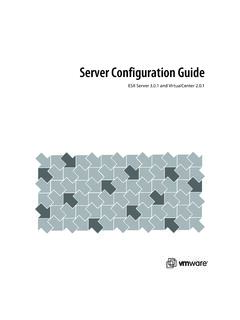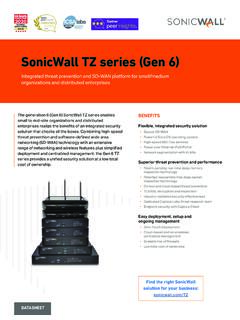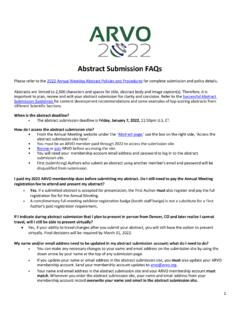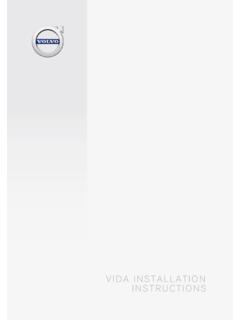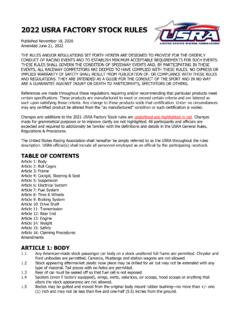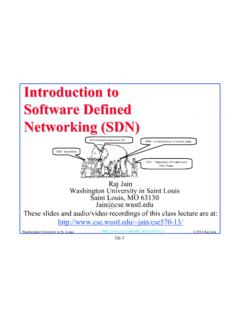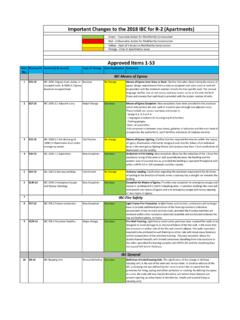Transcription of 1. DEFINING THE SCOPE OF YOUR AUDIT: CREATING ASSET …
1 The explosion in internet usage over the last 10 years has ensured that, from the biggest Fortune 500 companies to small one-man startups, almost every company now has a vital IT component (whether they know it or not). Every business, including yours, has valuable IT assets such as computers, networks, and data. Protecting those assets requires that companies big and small conduct their own IT security audits in order to get a clear picture of the security risks they face and how to best deal with those threats. The following are 10 steps to conduct your own basic IT security audit.
2 While these steps won't be as extensive as audits provided by professional consultants, this DIY version will get you started on the road to protecting your own company. 1. DEFINING THE SCOPE OF YOUR AUDIT: CREATING ASSET LISTS AND A SECURITY PERIMETERThe first step in conducting an audit is to create a master list of the assets your company has in order to figure outwhat needs to be protected through the audit. While it is easy to list your tangible assets things like computersservers, and files it becomes more difficult to list intangible assets.
3 To establish consistency in deciding whichintangible company assets are included, it is helpful to draw a "security perimeter" for your is the Security Perimeter? The security perimeter is both a conceptual and physical boundary within which your security audit will focus, and outside of which your audit will ignore. You ultimately decide for yourself what your security perimeter is, but a general rule of thumb is that the security perimeter should be the smallest boundary that contains the assets that you own and/or need to control for your own company's security.
4 Assets to Consider Once you have drawn up your security perimeter, it is time to complete your ASSET list. This involves considering every potential company ASSET and deciding whether or not it fits within the "security perimeter" you have drawn. To get you started, here is a list of common sensitive and and networking , digital or analog, with company-sensitive - sales, customer information, employee smartphones/ phones, IP PBXs (digital version of phone exchange boxes), related or regular phone call recordings and of employees daily schedule and pages, especially those that ask for customer details and those that are backed by web scriptsthat query a server access points ( , any scanners that control room entry)
5 This is by no means an exhaustive list, and you should at this point spend some time considering what other sensitive assets your company has. The more detail you use in listing your company's assets ( , "25 Dell Laptops Model D420 Version 2006", instead of "25 Computers"), the better, because this will help you recognize more clearly the specific threats which face each particular company ASSET . | 1752 Capital St., Suite #300, Elgin, IL 601242. CREATING A 'THREATS LIST'You can't protect assets simply by knowing what they are; you also have to understand how each individual ASSET isthreatened.
6 So, in this stage, you will compile an overall list of threats which currently face your Threats to Include? If your threat list is too broad, your security audit will end up getting focused on threats which are extremely small or remote. When deciding whether to include a particular threat on your 'Threat List', keep in mind that your test should follow a sliding scale. For example, if you are considering the possibility of a hurricane flooding out your servers, you should consider these things: how remote the threat is, and also how devastating the harm would be if it occurred.
7 A moderately remote harm can still be reasonably included in your threat list if the potential harm it would bring is large enough to your company. Common 'Threats' to Get you Started? Here are some relatively common security threats to help you get started in CREATING your company's threat and network passwords. Is there a log of all people with passwords (and what type)? Howsecure is this ACL list and how strong are the passwords currently in use? assets. Can computers or laptops be picked up and removed from the premises by visitors oreven employees?
8 Of physical assets. Do they exist? Are they backed up? backups. What backups of virtual assets exist, how are they backed up, where are the backups kept,and who conducts the backups? of data access. Each time someone accesses some data, is this logged, along with who, what,when, where, to sensitive customer data ( , credit card info). Who has access? How can access becontrolled? Can this information be accessed from outside the company premises? to client lists. Does the website allow backdoor access into the client database? Can it be hacked?
9 Calling. Are long-distance calls restricted or is it a free-for-all? Should it be restricted? Are spam filters in place? Do employees need to be educated on how to spotpotential spam and phishing emails? Is there a company policy that outgoing emails to clients not havecertain types of hyperlinks in them?3. PAST DUE DILIGENCE & PREDICTING THE FUTUREAt this point, you have compiled a list of current threats, but what about security threats that have not come on to yourradar yet, or haven't even been developed? A good security audit should account not just for those security threatsthat face your company today, but those that will arise in the Your Threat History The first step towards predicting future threats is to examine your company's records and speak with long-time employees about past security threats that the company has faced.
10 Most threats repeat themselves, so by cataloging your company's past experiences and including the relevant threats on your threat list, you'll get a more complete picture of your company's vulnerabilities. Checking with Your Competition When it comes to outside security threats, companies that are ordinarily rivals often turn into one another's greatest ASSET . By developing a relationship with your competition, you can develop a clearer picture of the future threats your company will face by sharing information about security threats with one another.
